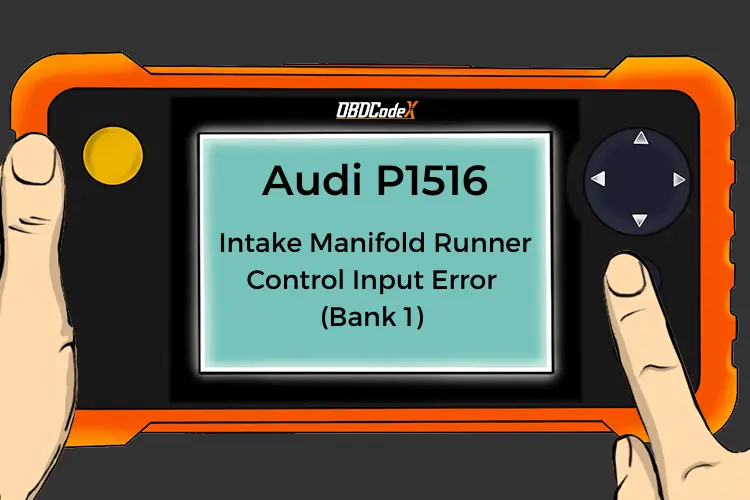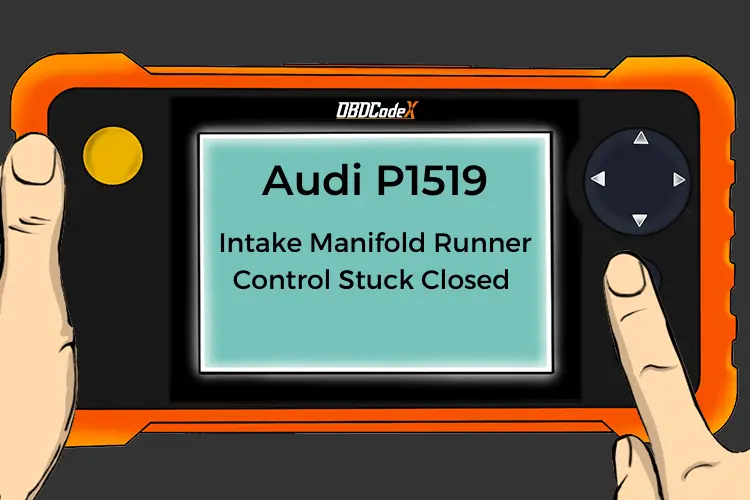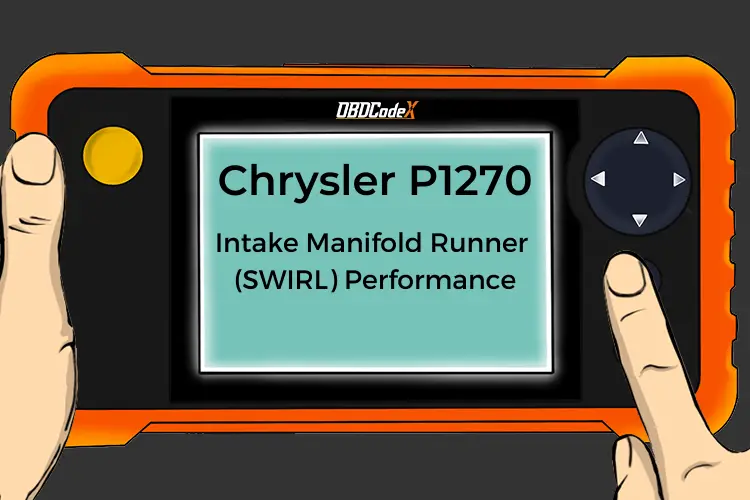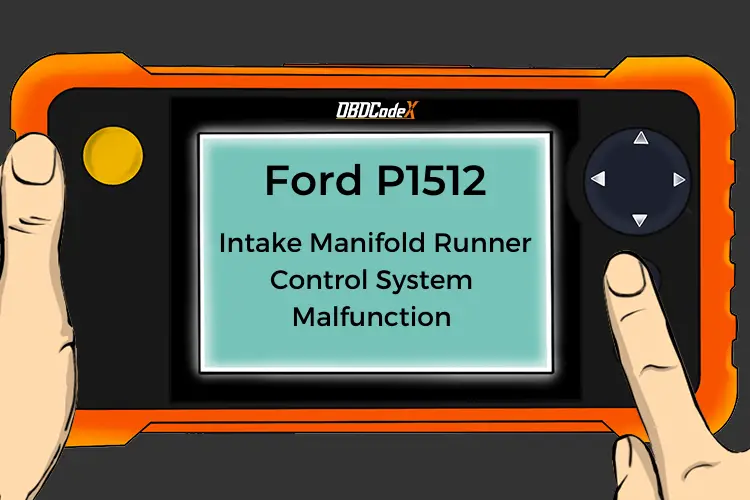P2010: Intake Manifold Runner Control Circuit High Bank 1
Is your scanner showing P2010?
No worries. We'll show you what it means and how to deal with it.
P2010: Intake Manifold Runner Control Circuit High Bank 1
OVERVIEWWhat Does The P2010 Code Mean?
When I encounter a stored code P2010, I know it means that the powertrain control module (PCM) has detected an intake manifold runner control (IMRC) actuator circuit voltage (for engine bank one) that is greater than expected. Bank 1 tells me that the malfunction is associated with the bank of the engine that contains the number one cylinder.
The PCM controls the IMRC system, electronically. The IMRC system is used to manage and fine tune air as it flows into the lower intake manifold, cylinder heads, and the combustion chambers. Individually shaped metal flaps, which fit tightly into the intake manifold ports of each cylinder, are opened and closed by an electronic runner control actuator.
In the IMRC, thin metal runner flaps are secured (with small bolts or rivets) to a metal rod that extends the length of each cylinder head and passes through the center of each intake port. The flaps are opened with one motion, which also allows all of the flaps to be rendered inoperative if one of them is stuck or binding.
The IMRC rod is connected to the actuator with a mechanical arm or gear. The actuator is maneuvered using a vacuum diaphragm on some models. When a vacuum operated actuator is utilized, the PCM controls an electronic solenoid, which regulates intake vacuum to the IMRC actuator.
It has been established that a swirling (air flow) effect helps the air/fuel mixture to be atomized more completely. This can lead to a decrease in exhaust emissions, improved fuel efficiency, and optimized engine performance. Using the IMRC to channel and restrict air flow, as it is drawn into the engine, creates this swirling effect but different manufacturers use varying methods.
Use your vehicle information source (All Data DIY is an excellent resource) to obtain specifications for the IMRC system with which the vehicle in question is equipped. In theory, the IMRC runners will be nearly closed during starting/idling conditions and opened when the throttle plate is opened.
The PCM monitors input data signals from the IMRC runner position sensor, manifold absolute pressure (MAP) sensor, manifold air temperature sensor, intake air temperature sensor, throttle position sensor, the oxygen sensors, and mass airflow (MAF) sensor (among others) to ensure that the IMRC system is operating as anticipated.
IMRC runner flap position is monitored by the PCM, which adjusts flap position according to engine drivability data. A malfunction indicator lamp may be illuminated, and a code P2010 will be stored, if the PCM fails to see a change in MAP or manifold air temperature as expected, when the IMRC flaps are moved. Some vehicles will require multiple failure cycles for MIL illumination.
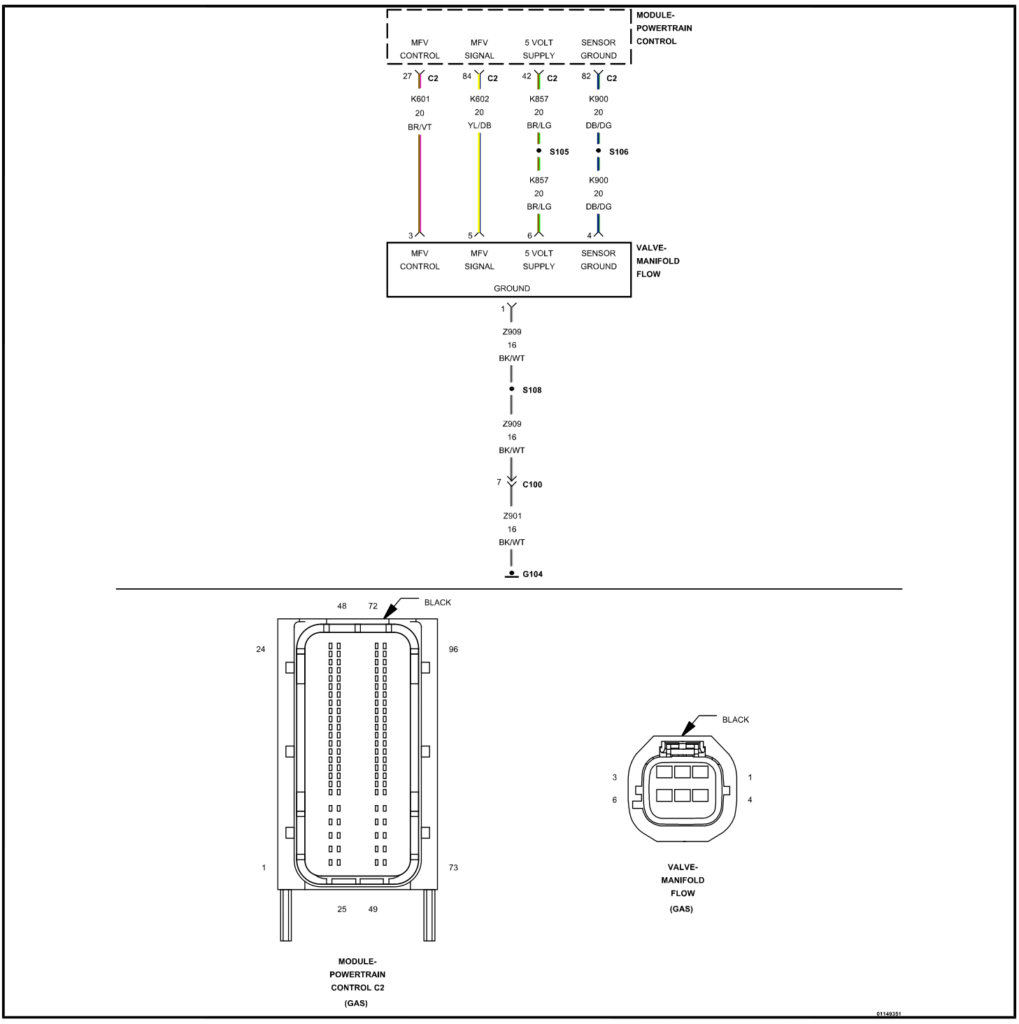
P2010 wiring diagram
What Are The Symptoms Of The P2010 Code?
Symptoms of a P2010 code may include:
- Hesitation upon acceleration
- Reduction in engine performance, especially at low RPM levels
- Rich or lean exhaust
- Diminished fuel efficiency
- Engine surge
What Are The Potential Causes Of The P2010 Code?
Possible causes for this engine code include:
- Loose or binding intake manifold runners
- Defective IMRC actuator solenoid
- Bad intake manifold runner position sensor
- Open or shorted wiring in the IMRC actuator solenoid control circuit
- Carbon buildup on the IMRC flaps or intake manifold ports
- Faulty MAP Sensor
- Corroded IMRC actuator solenoid connector face
How Can You Fix The P2010 Code?
A diagnostic scanner, a digital volt/ohmmeter (DVOM), and a reliable vehicle information source will be required to diagnose a code P2010. I find it helpful to check technical service bulletins (TSB) for the particular symptoms, stored code/s, and vehicle make and model in question before starting any diagnosis. If you find a TSB linked to the code/symptoms in question, the information contained therein will likely help in diagnosing the code as TSBs are crested from many thousands of repairs.
Step 1
A practical launching point for any diagnosis is a visual inspection of system wiring and connector faces. Knowing that IMRC actuator connectors are prone to corrosion, and that this could cause an open circuit, one might focus attention on inspection of these areas.
Step 2
Proceed by connecting the scanner to the vehicle diagnostic connector and retrieving all stored codes and freeze frame data. Write this information down, just in case this is an intermittent code. Next, clear the codes and test-drive the vehicle to see if the code is reset.
Step 3
Next, gain access to the IMRC actuator solenoid and IMRC runner position sensor, if the code is reset. Consult your vehicle information source for specifications and then use the DVOM to perform resistance tests on both the solenoid and the sensor. Replace either of these components, if it fails to comply with specs, and retest the system.
Step 4
To prevent PCM damage, disconnect all related controllers before testing circuit resistance with the DVOM. If actuator and sensor resistance levels are in compliance with manufacturer’s specifications, utilize the DVOM to test resistance and continuity on all system circuits.
Additional diagnostic notes:
- Carbon coking inside the intake manifold walls can cause IMRC flaps to bind
- Use caution when handling small screws or rivets in or near intake manifold openings
- Test for IMR flap binding with the actuator disconnected from the shaft
- The screws (or rivets) that secure the flaps to the shaft may loosen or fall out causing the flaps to bind
Recommended Parts
Below are some recommended auto parts to help you address the trouble code affecting your vehicle and get it running smoothly again:
Note: During the purchasing process, please check carefully whether the part you want to buy fits your car!
Reference Sources
P2010 Intake Manifold Runner Control Circuit High Bank 1, OBD-Codes.







